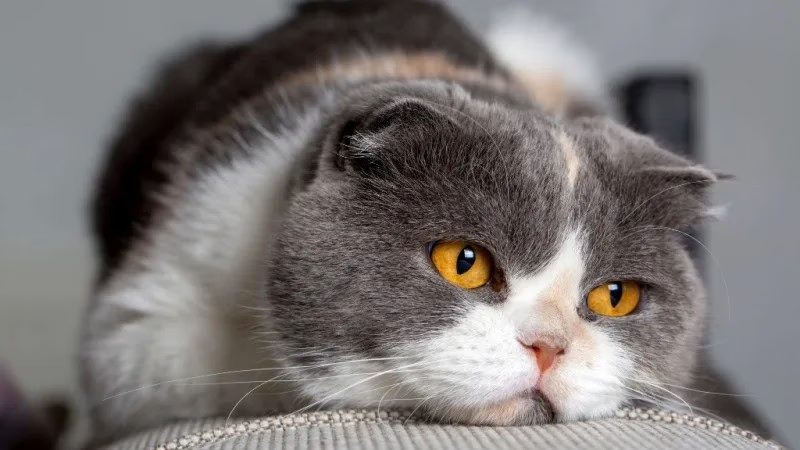Cats, like humans, are susceptible to upper respiratory infections (URIs). These illnesses can range from mild to severe and significantly impact a cat’s health and quality of life. Understanding the causes, symptoms, treatment options, and prevention methods can help pet owners provide the best care for their feline companions.
URIs in cats are primarily caused by viruses and bacteria. The most common culprits include:
- Feline Herpesvirus (FHV-1): This virus is a major contributor to URIs and often persists in a cat’s body, causing recurrent flare-ups during stress or illness.
- Feline Calicivirus (FCV): Known for causing oral ulcers and respiratory symptoms, FCV can vary in severity.
- Bacterial Infections:
- Chlamydia felis: Often associated with conjunctivitis.
- Bordetella bronchiseptica: Can cause sneezing, coughing, and nasal discharge.
These pathogens are highly contagious and spread through direct contact with infected cats, contaminated surfaces, or shared food and water bowls.
Signs and Symptoms of Upper Respiratory Infection
Cats with a URI may exhibit symptoms such as:
- Sneezing and nasal congestion.
- Watery or thick discharge from the eyes or nose.
- Coughing or difficulty breathing.
- Loss of appetite and lethargy.
- Fever.
- Swelling or redness in the eyes.
Kittens, elderly cats, or those with weakened immune systems may experience more severe symptoms.
Treatment Options
Treatment depends on the severity of the infection:
- Supportive Care:
- Hydration: Encourage fluid intake to prevent dehydration. This can include offering wet food or using a syringe to provide water.
- Nutrition: Ensure the cat is eating, even if it means warming up food to make it more aromatic.
- Humidity: Use a humidifier or take the cat into a steamy bathroom to ease congestion.
- Medications:
- Antibiotics: Prescribed for secondary bacterial infections.
- Antiviral Drugs: Sometimes used for severe viral infections.
- Eye Drops or Ointments: Helpful for eye discharge or conjunctivitis.
- Hospitalization:
- For severe cases where cats cannot eat, drink, or breathe comfortably, hospitalization with intravenous fluids and oxygen therapy may be necessary.
Always consult a veterinarian for proper diagnosis and treatment tailored to your cat’s needs.
Prevention Tips
Preventing upper respiratory infections (URIs) in cats involves reducing their exposure to infectious agents and supporting their immune system. By following these preventive measures, you can help keep your cat healthy and reduce the risk of illness.
-
Vaccination: Ensure your cat is up-to-date on core vaccines, including feline herpesvirus (FHV-1) and feline calicivirus (FCV), which are common causes of URIs. Regular veterinary checkups can help determine if booster shots are needed.
-
Hygiene: Proper hygiene is essential in preventing the spread of infectious diseases. Clean food and water bowls daily, scoop litter boxes frequently, and wash bedding regularly. If you have multiple cats, disinfect shared surfaces and items to minimize contamination.
-
Isolation: If you have a cat that is sick with a URI, keep them separated from healthy cats to prevent transmission. Wash your hands after handling an infected cat, and avoid sharing food and water dishes between sick and healthy pets. Quarantining new cats before introducing them to your household can also help prevent the spread of illness.
-
Stress Reduction: Stress can weaken a cat’s immune system and trigger flare-ups of latent infections, such as feline herpesvirus. Provide a stable, calm environment with plenty of hiding spots, enrichment activities, and a consistent routine. Using pheromone diffusers or engaging in interactive play can also help reduce stress.
-
Good Nutrition: A well-balanced diet rich in essential nutrients, including vitamins, minerals, and high-quality protein, supports a strong immune system. Ensure your cat has access to fresh water at all times and consult your veterinarian about supplements that may aid in immune function.
-
Proper Ventilation and Air Quality: Poor air quality can irritate a cat’s respiratory system and increase susceptibility to infections. Ensure your home is well-ventilated and avoid using strong chemicals, smoke, or heavily scented products around your cat.
-
Regular Veterinary Checkups: Routine veterinary visits help catch potential health issues early and ensure your cat is in optimal condition. Your vet can provide personalized advice on preventive care based on your cat’s age, lifestyle, and health history.
By implementing these preventive measures, you can significantly reduce the likelihood of your cat developing a URI and promote overall well-being.
When to Seek Veterinary Care
If your cat shows signs of a URI, it’s essential to monitor their symptoms closely. Seek veterinary attention if:
- Symptoms worsen or persist for more than a week.
- Your cat stops eating or drinking.
- Breathing becomes labored or noisy.
- Discharge becomes yellow-green or blood-tinged.
While upper respiratory infections in cats can be concerning, prompt care and preventive measures can help minimize their impact. By staying vigilant and working closely with your veterinarian, you can ensure your furry friend stays healthy and happy.

 Pet2 App launching! Sign up to be first to earn rewards and gain followers faster.
Pet2 App launching! Sign up to be first to earn rewards and gain followers faster.
